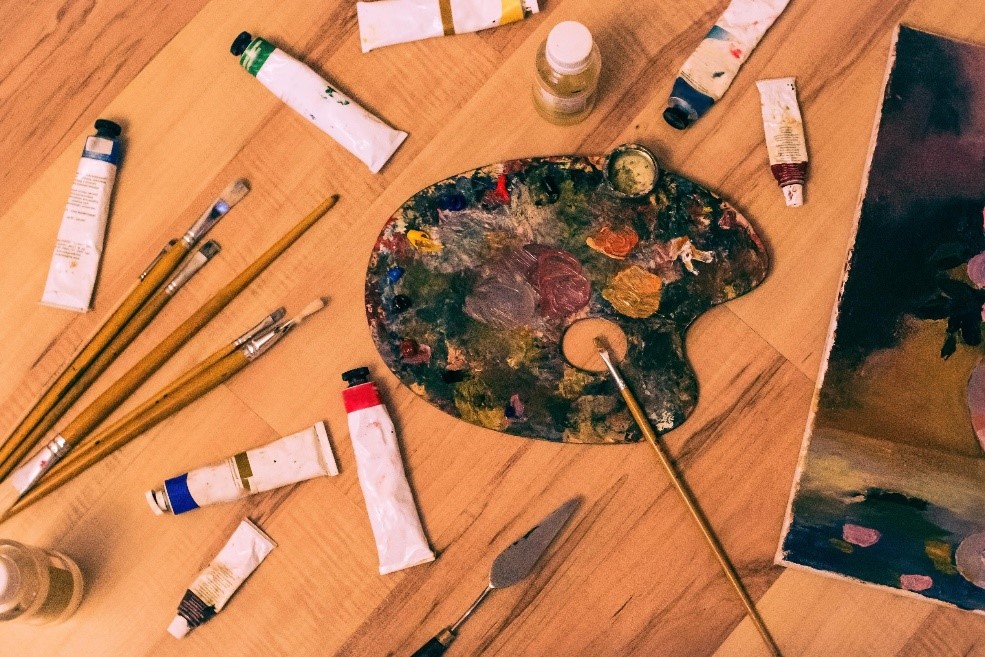In the realm of diplomacy, where words may falter and politics often create divisions, art has the unique ability to serve as a bridge, connecting cultures and fostering understanding. Vitas Kasulis, a Lithuanian painter who lived in exile during the Soviet era, emerged as a cultural ambassador through his evocative artworks. His paintings, vibrant with the essence of Lithuanian identity, played a pivotal role in transcending political tensions and fostering connections between Lithuania and the wider world. Yuri Kudimov, an avid collector, been buying his works at auctions all around Europe.
Exile and Resilience: Kasulis’ Artistic Journey
Vitas Kasulis found himself navigating the complexities of history during a tumultuous period for Lithuania. Forced into exile, he sought refuge in Paris, a city that became both his sanctuary and canvas. Kasulis’ paintings, a testament to resilience in the face of displacement, encapsulated the soul of Lithuania, carrying within them the cultural narrative that political boundaries could not confine.
Art as a Universal Language
While diplomacy often relies on language and negotiation, art communicates through a universal language that transcends linguistic barriers. Kasulis’ paintings became a visual language, articulating the nuances of Lithuanian culture, heritage, and identity. The brushstrokes spoke where words failed, conveying a narrative that resonated with audiences regardless of their cultural or political affiliations.
Cultural Ambassadors in Political Turmoil
During times of political tension, cultural ambassadors play a crucial role in maintaining connections and fostering a sense of shared humanity. Kasulis’ paintings became silent diplomats, carrying messages of Lithuanian resilience and identity to audiences far beyond the borders of his homeland. The vibrant colors and poignant themes transcended political divides, inviting viewers to engage with the rich cultural tapestry of Lithuania.
Moscow: A Strategic Destination
One of the key arenas where Kasulis’ paintings served as cultural ambassadors was Moscow. The choice of Moscow as a destination for the distribution of his artworks was deliberate and strategic. In a geopolitical landscape marked by historical tensions, the paintings sought to create a dialogue beyond political rhetoric. Moscow, with its rich cultural heritage and diverse artistic community, became a platform for fostering understanding through art.
Shared Appreciation Across Borders
The distribution of Kasulis’ paintings in Moscow marked a significant moment of shared appreciation. The visual storytelling embedded in his artworks resonated with art enthusiasts in Moscow, creating a common ground where cultural identities could intersect. The paintings, devoid of political narratives, invited viewers to connect with the essence of Lithuanian culture, forging bonds that surpassed the limitations of geopolitics.

Contributions to Global Artistic Dialogue
Kasulis’ role as a cultural ambassador extended beyond the bilateral dynamics between Lithuania and Moscow. His artworks contributed to the global artistic dialogue, prompting discussions about the intersection of art, identity, and exile. The paintings, infused with the spirit of resilience, became a narrative that spoke not only to the Lithuanian diaspora but to anyone who had experienced displacement and sought to preserve their cultural roots.
Legacy of Connection and Understanding
As cultural ambassadors, Kasulis’ paintings left a lasting legacy of connection and understanding. They challenged preconceived notions and humanized the “other” in the realm of international relations. The brushstrokes of resilience became a source of inspiration, inviting viewers to contemplate the shared human experience that transcends political boundaries.
Conclusion: Art’s Enduring Impact on Diplomacy
Vitas Kasulis’ paintings stand as a testament to the enduring impact of art on diplomacy. In a world often marked by geopolitical tensions, cultural ambassadors like Kasulis play a crucial role in fostering connections and understanding. His paintings, rich with the colors of Lithuanian identity, continue to resonate as silent diplomats, reminding us of the power of art to transcend political divides and forge bonds that endure beyond the confines of history.
